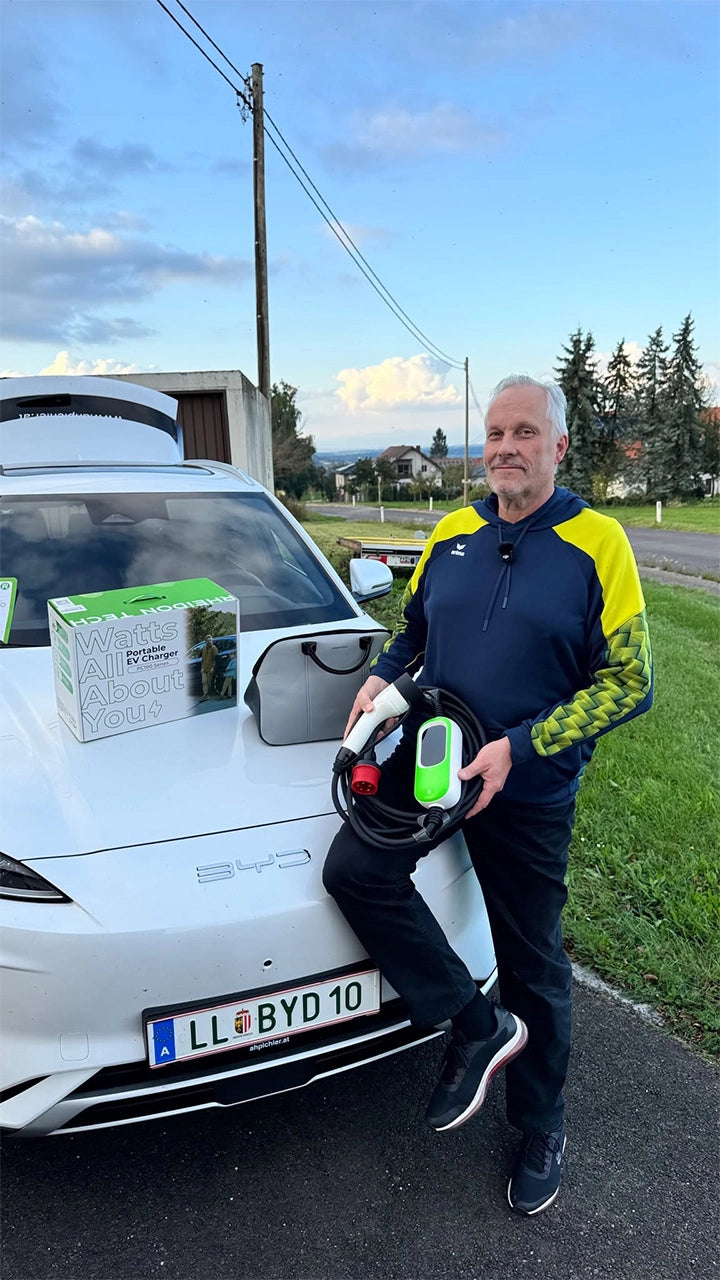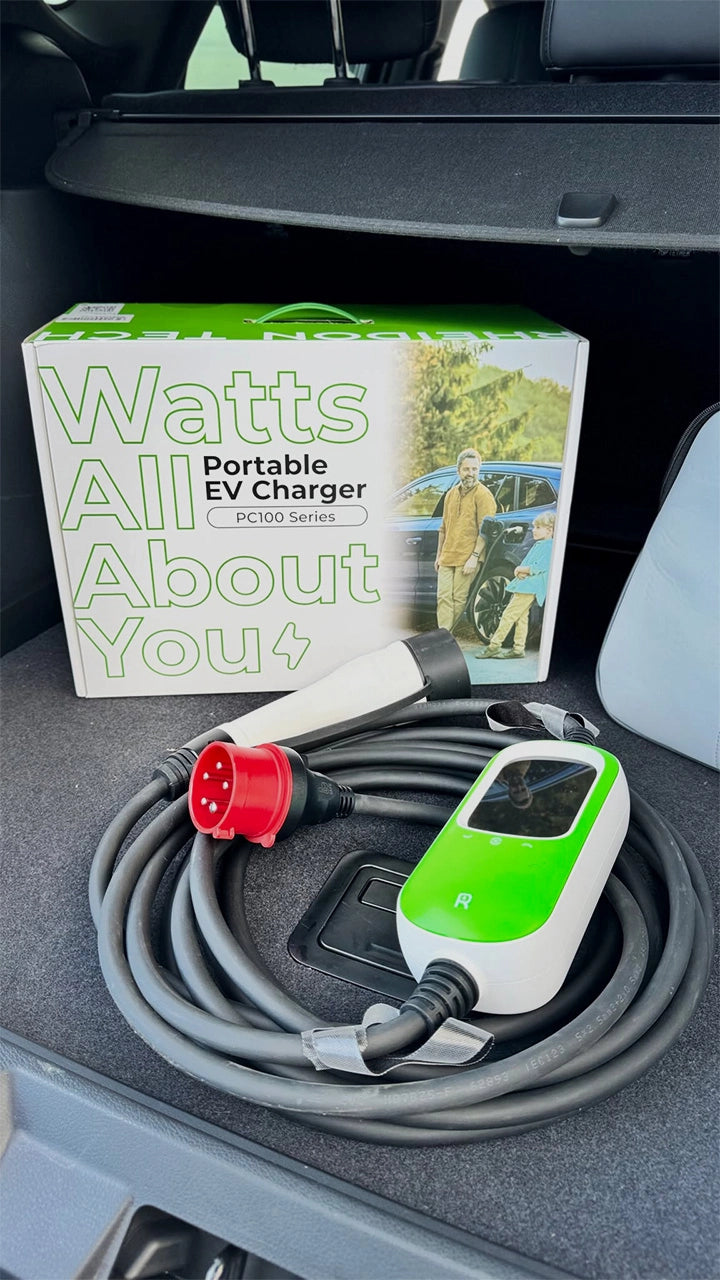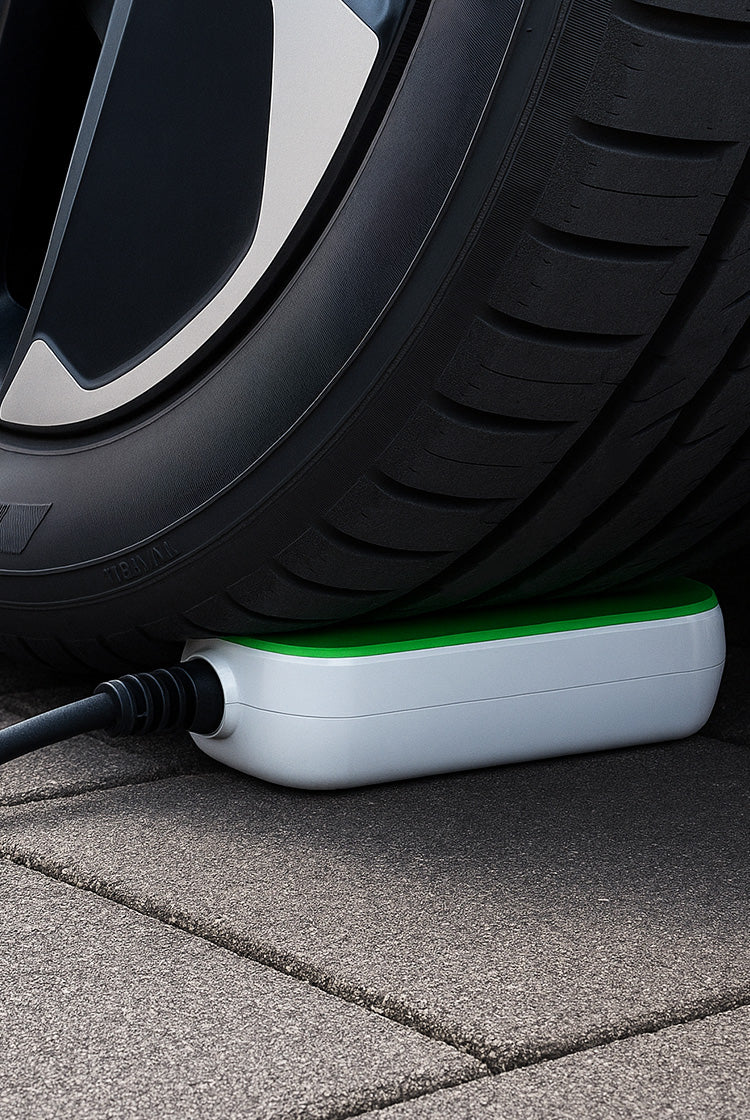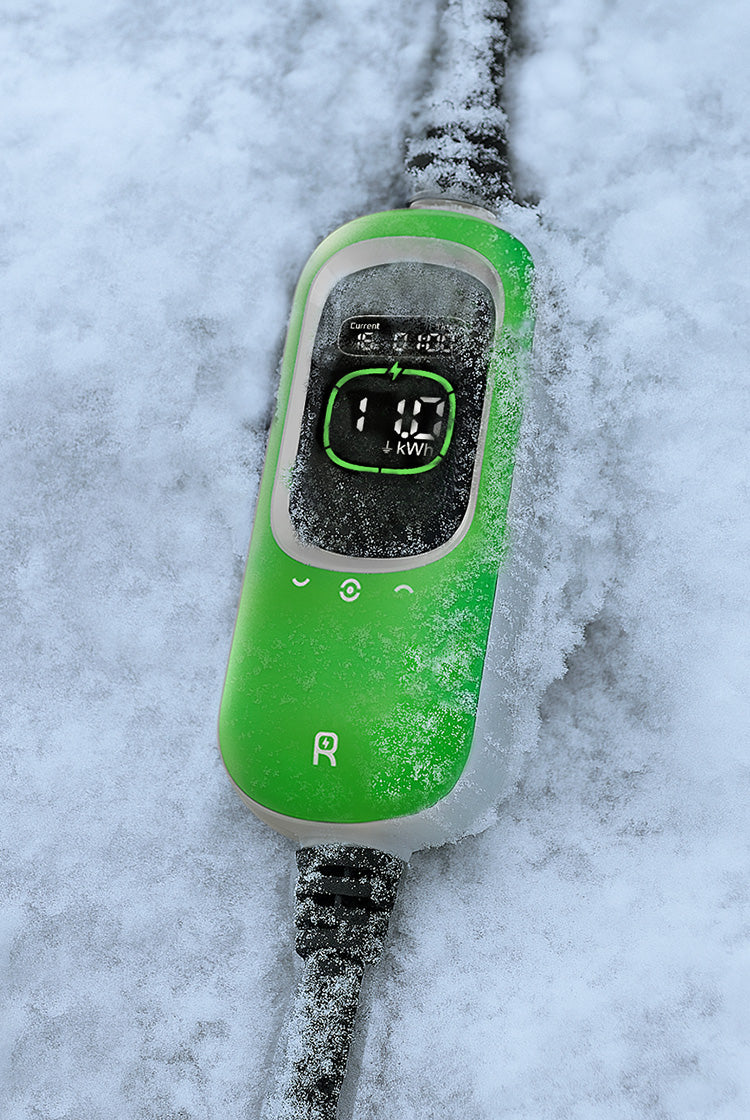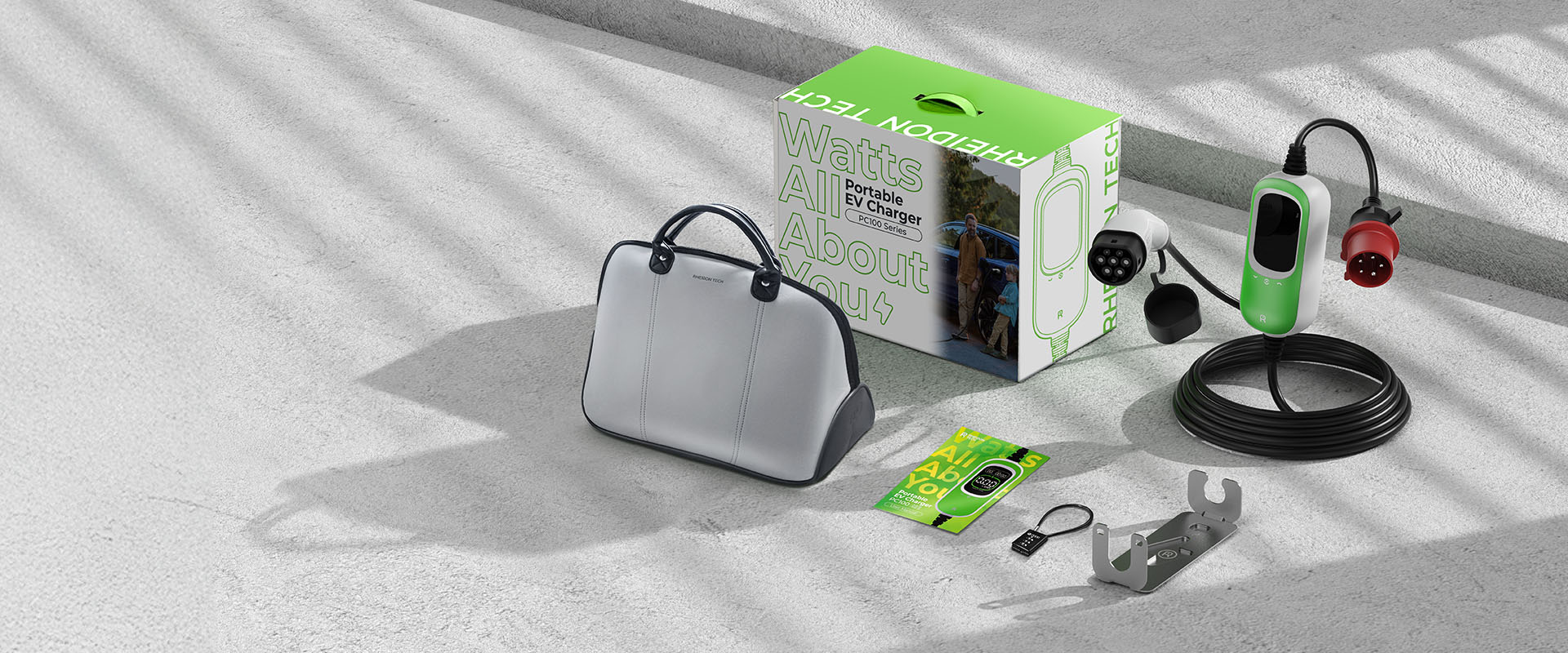











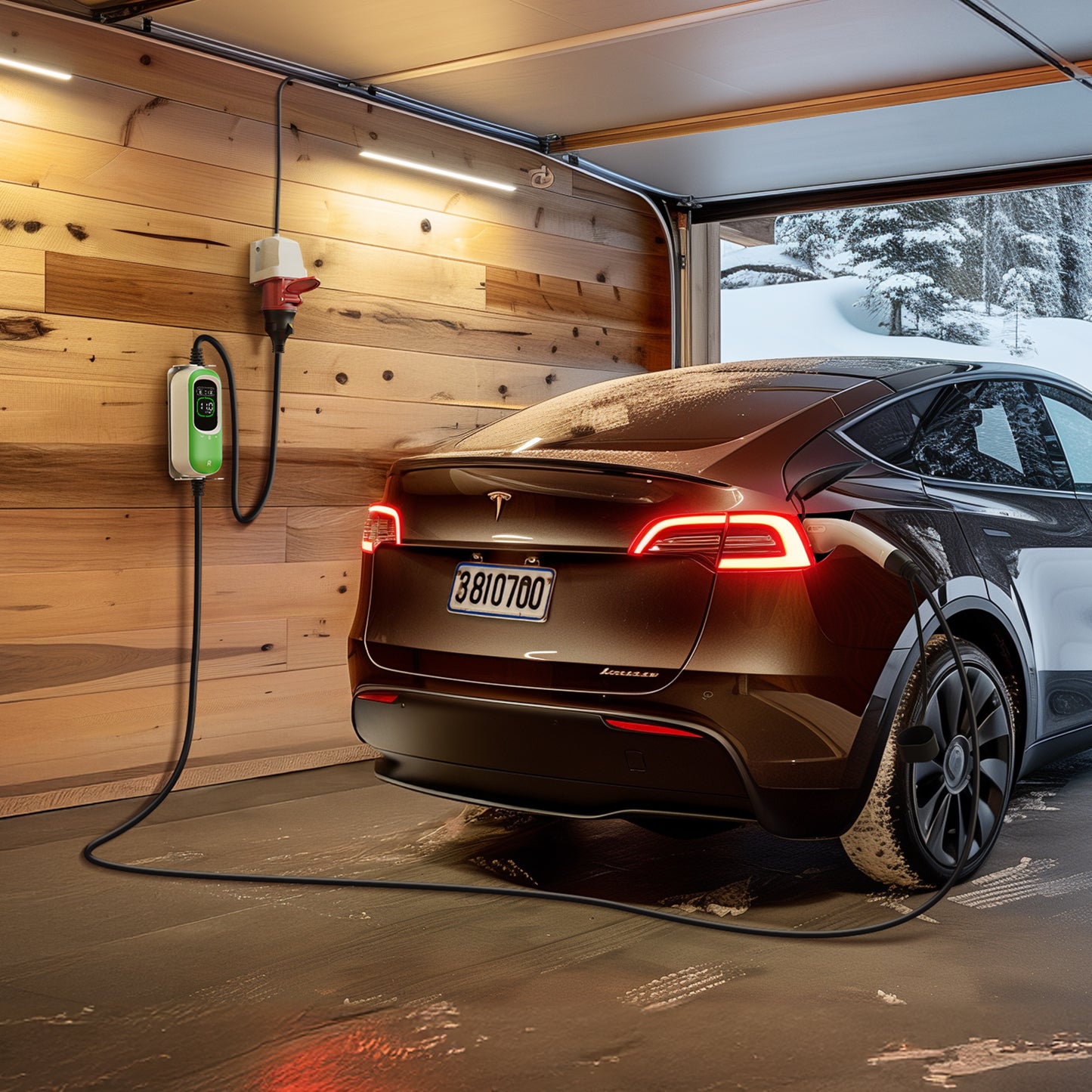
Let customers speak for us
Real-Life Charging Scenarios
Stops Danger Before It Starts
Built-in temperature sensor in the plug detects overheating and cuts off charging instantly.
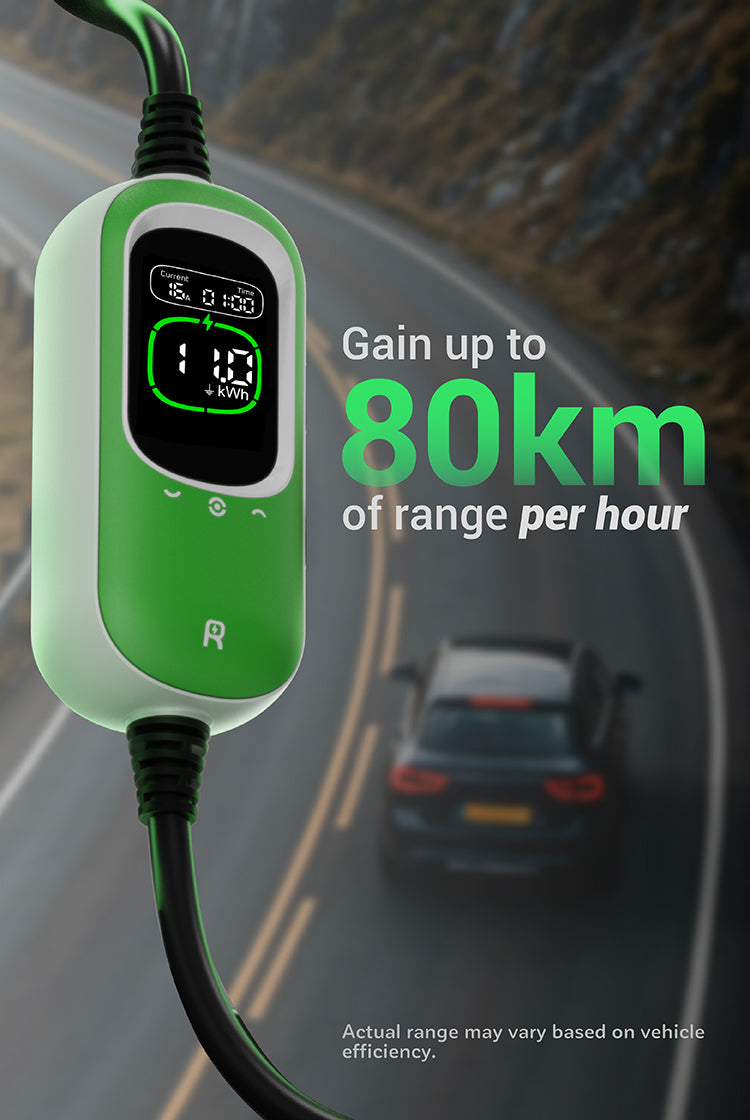
Fast Charging, Cut Your Wait Time
Charge while you sleep, wake up with a full battery.
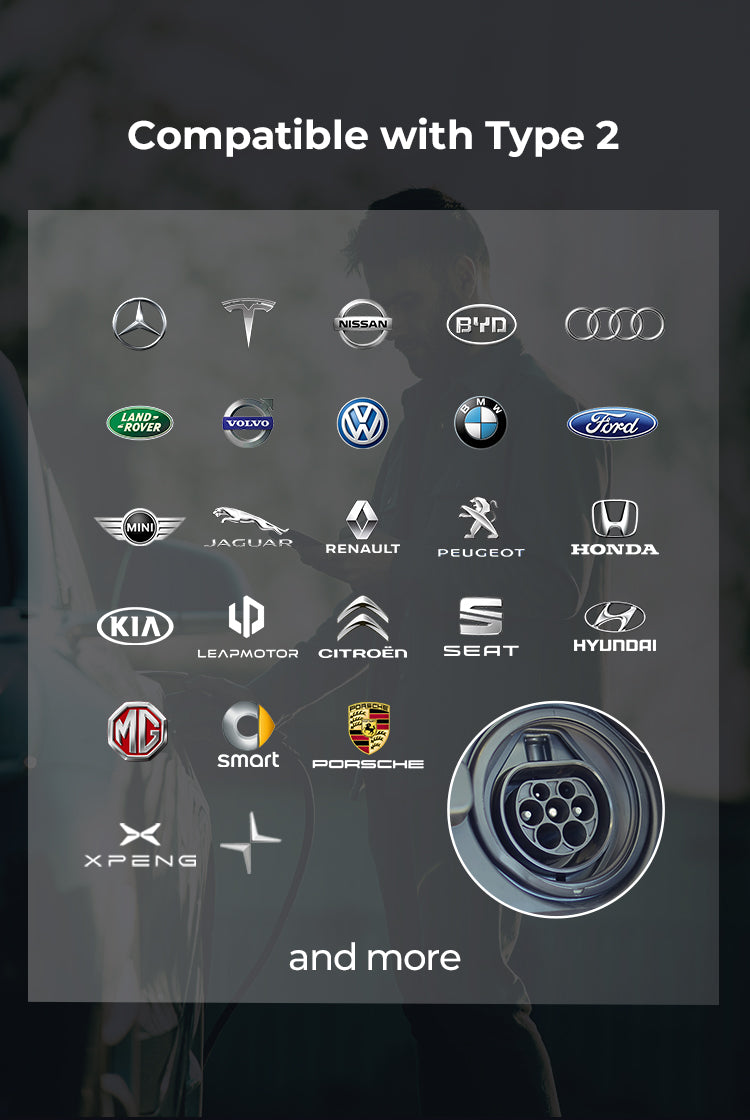
Works with Your EV
Type 2 plug ensures wide compatibility across Europe’s leading EVs.
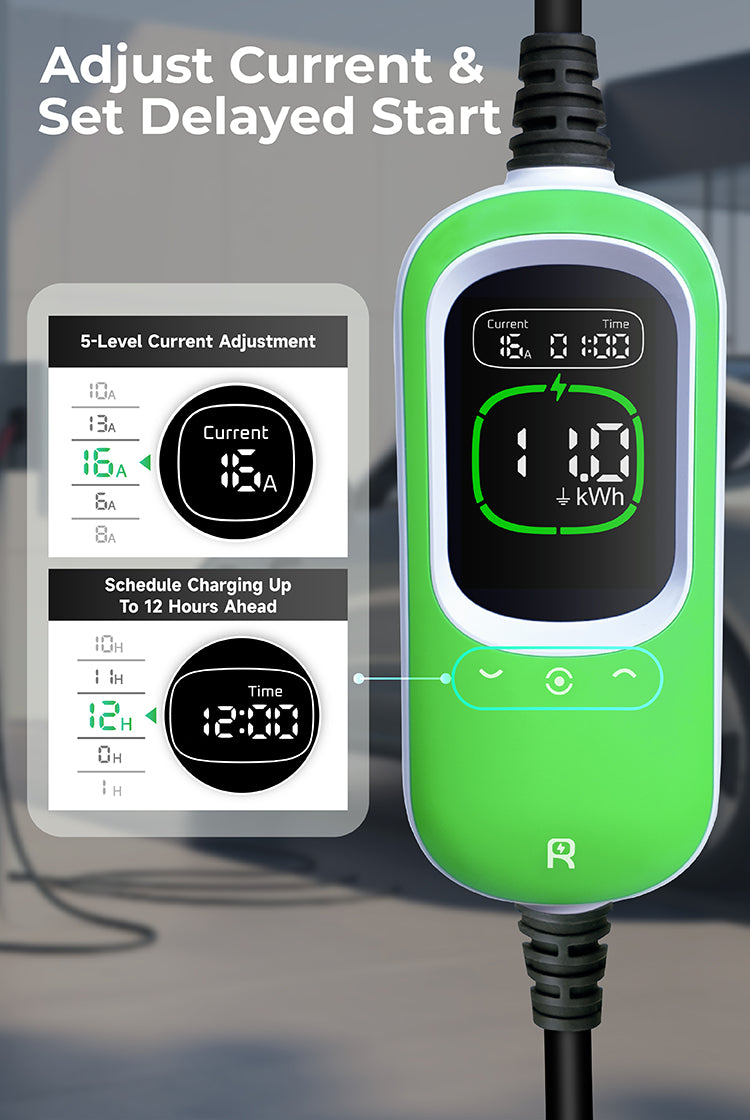
Intuitive Configuration: Full Control at Your Fingertips
Adjust current and set delayed start with touch buttons — ideal for off-peak charging.
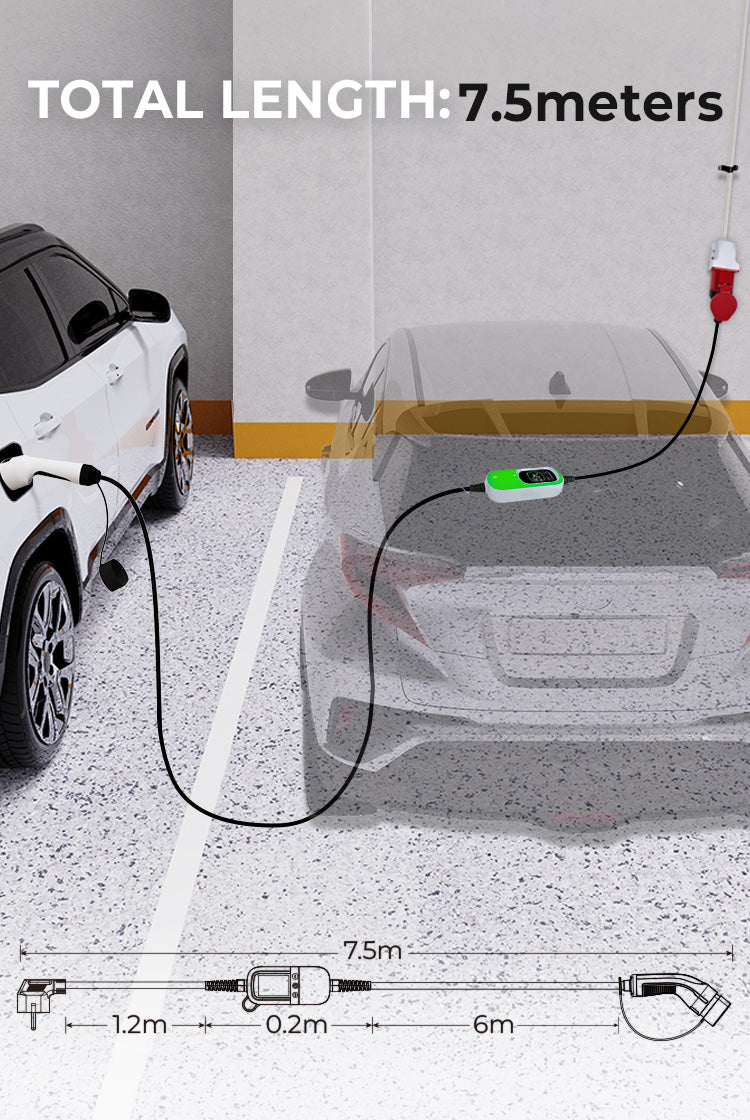
Reach Beyond Limits
7.5m of freedom — easily reaches across two vehicles.
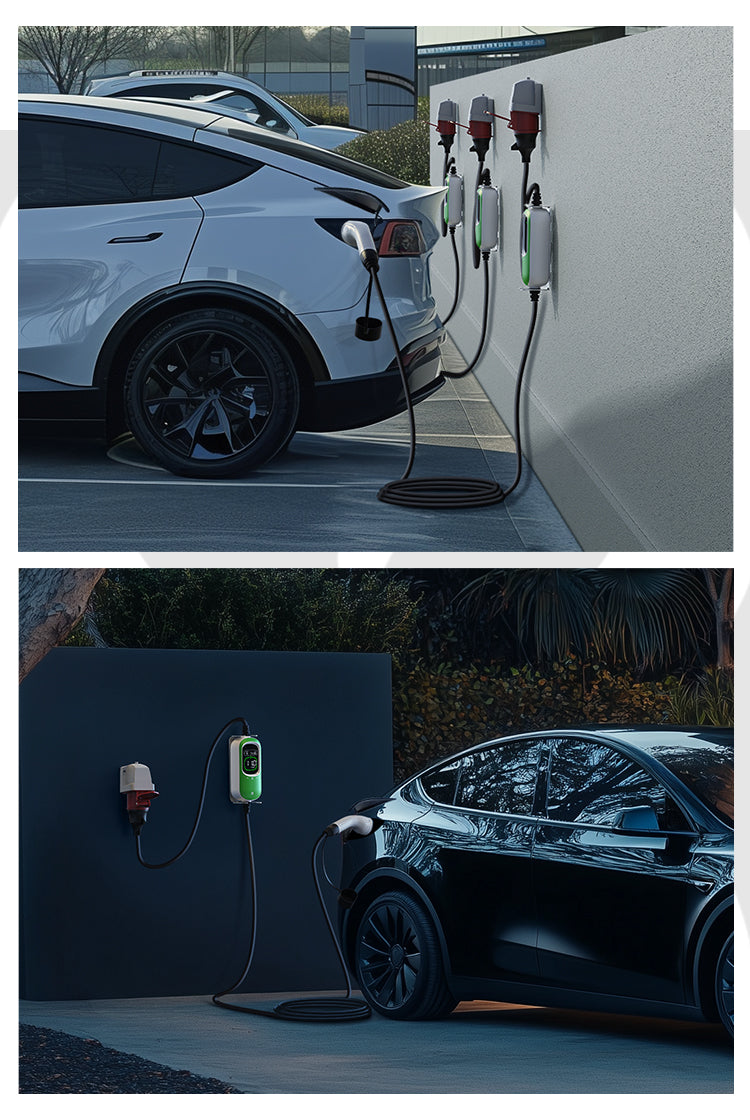
No Extra Installation Needed
Save time and money — just plug into a CEE socket and start charging.
pc100-specifications
EN IEC 61851
EN IEC 61000-6-1:2019
EN IEC 61000-6-3:2021
EN IEC 62196, RoHS
Grounding Protection
Over Current Protection
Anti-Thunder Protection
Over Temperature Protection
Plug Temperature Protection
Short Circuit Protection
Low Voltage Protection
High Voltage Protection
Whats in the box
Tested by EV Enthusiasts
FAQs
Do the Rheidon Tech chargers have RCD protection module (direct current fault protection)?
All Rheidon Tech chargers are equipped with Type A + DC 6 mA With Protective Conductor Monitoring.
Why does the Rheidon Tech PC100 Charger provide a safer charging experience? What specific safety features does it include?
In addition to standard safety protection features, the PC100 is equipped with NTC temperature monitoring at the plug end. If abnormal temperature conditions are detected, charging will automatically stop and will only resume once the temperature drops to a safe level, ensuring protection for the entire charging system.
Why does the Rheidon Tech Charger need to test the grounding circuit?
In actual customer installation conditions, the grid is not grounded everywhere.Especially in areas with high safety requirements or permafrost areas, isolation transformers are used to eliminate the risk of electric shock in terminal equipment.In order for RT to work in these areas, ground detection can be deactivated. It is also suitable for networks where grounding cannot be detected (for example in Norway).
What connection cable (wire cross-section) should I use with the Rheidon Tech Charger?
A miniature circuit breaker (MCB) protects your wiring by automatically shutting off the circuit when excessive current flows, preventing overheating or damage. The recommended cable sizes for the Rheidon Tech Charger depend on the maximum current and installation method:
For maximum current of 32 A:
6 mm²: Surface-mounted cables (not embedded in walls).
6-10 mm²: Cables installed within conduits.
10 mm²: Cables embedded in insulated walls.
For maximum current of 16 A:
2.5 mm²: Surface-mounted cables.
4 mm²: Cables installed within conduits.
10 mm²: Cables embedded in insulated walls.
Important Notes:
The final cable size should be determined by a qualified electrician, considering the specific installation conditions.
Electricians must also account for the simultaneity factor, which assumes the cable operates at full load continuously. This factor is essential for accurate cable sizing.
How to set the charging parameters for electric vehicles? Why does the charging speed vary?
For the 22 kW Rheidon Tech Charger ,the charger allows you to set the current between 6 A and 32 A.
For the 3.6 kW and 11 kW Rheidon Tech Charger, the charger allows you to set the current between 6 A and 16 A.
You can also lower the power setting if needed.
To use the charger at full power:
The 22 kW charger requires a 32 A fuse.
The 3.6 kW and 11 kW charger requires a 16 A fuse.
Important Notes:
The vehicle’s On-Board Charger (OBC) plays a crucial role in determining the maximum charging speed, as different vehicles support varying AC charging rates.
Higher current (more amps) allows for faster charging.
Lower current offers more efficient charging, helping extend battery life and stabilize the power grid.
Please note that the vehicle may limit the actual charging power, meaning it could be lower than the charger’s maximum capacity.
For more information on the factors affecting EV charging speed, feel free to visit our blog.
















